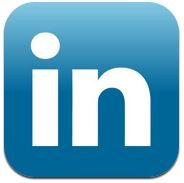Throughout this profile a user will include a personal picture, their work experience, volunteer experience, causes they care about, a personal summary, and recommendations. All of these sections are similar to those needed for a job application and/or interview. Essentially, LinkedIn is an 'interview' before THE interview for an organization.
The mashable article states that:
"LinkedIn is no longer just a place to post your resume and look for a job. It’s become
a vital business tool for professionals and companies."
Furthermore, the article explains that LinkedIn in a social channel that creates new oppporunities. Although I agree with both statements, I still see LinkedIn as an extended employee site.
I see where LinkedIn allows for great connections to be made between companies and people. These connections can lead to greater opportunities for users as well as companies. For a non-profit organization to join LinkedIn and utilizes features a hiring process could be sped up dramatically.
The company is asked to complete a company page and have its employees 'connect' to the companies page. This will help get the word out about the organization itself, as stated in the LinkedIn article about nonprofit organizations.
Canadian Foundation of Women's Health has a great overview on the company description. It includes their mission, vision, goals, priorities, and specialities. Each of these are very important to any organization and LinkedIn allows the company to be upfront about them. These attributes for a non-profit can attract a person whose interests match this overview.
Although the CFWH does a great job with their companies overview, the connection to the employees is missing. Currently (9/29), there is only one employee of eight included on the "Employee Insights". This drastically limits the companies ability to connect to critical audiences. This is evident with CFWH having only sixty-three followers.
I'm not sure if this has to due with the organization being in Canada or not. This medium may not be popular in Canada, therefore its popularity on this site is low. In my opinion the organization should have all employees join LinkedIn whether or not it is popular in Canada. This way, the employees are familiar with the site if LinkedIn were to catch on in Canada.





